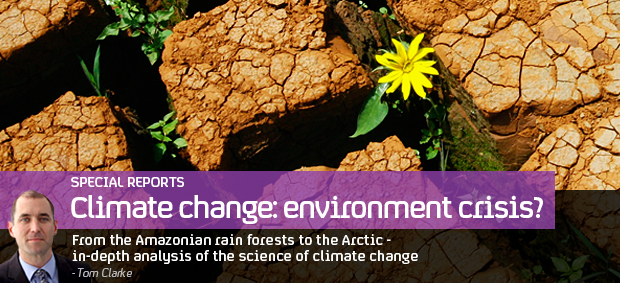Why Greenland’s record ice-melt matters
The second largest block of freshwater ice on the planet melted more this year than ever before, contributing to rising sea levels and even possibly the weather. Tom Clarke sets sail to check it out.
About the only impression you get as you approach the Greenland ice sheet is how unimaginably vast it is.
It’s a continuous sheet of ice around six times the size of the UK and nearly two miles deep in places. After Antarctica, it is the second largest block of freshwater ice on the planet. Any changes here affect us all.
This year the Arctic hit in the headlines as sea ice which covers the entire ocean in winter melted away more than ever before. But what get less attention was the fact Greenland’s vast ice-cap underwent record melting too.
Any changes here affect us all.
“This summer, by mid-July, the entire ice sheet was melting – that’s totally unprecedented,” said Dr Alun Hubbard a glaciologist at the University of Aberystwyth.
But the warming Arctic Ocean – a key factor driving sea ice retreat – could also be accelerating the melting of Greenland’s vast ice sheet.

“What we’re seeing at the margins is the melt-water coming in, the very warm ocean currents starting to access up these fjords and undermine these glaciers, and that means they’re literally falling apart at the edges,” said Hubbard.
This is significant. First, because melting of the Greenland icecap at its current rate will increase sea levels worldwide by six or seven metres over the coming centuries. But also because the increased influx of fresh water into North Atlantic could change our weather.
Already temperature shifts in the Arctic Ocean have been implicated in this summer’s catastrophic US drought and potentially in our washout summer back home.
Aboard the SV Gambo
We joined Dr Hubbard’s team on board SV Gambo – his 1970s steel-hulled sailing boat that’s been retrofitted to cope with Arctic ice. His research team have been using the boat as a floating laboratory to study how Greenland’s vast glaciers are carrying ice off the ice sheet of the interior and into the sea.
They’re focussing their work on the Store glacier – one of the largest in Western Greenland. Using side-scan sonar they’ve profiled the glacier’s bulk beneath the waves and using time-lapse cameras charted its response to changing sea temperatures.
The front or “snout” of store rises around 100 metres out of the sea – but beneath there’s another 500 metres or so submerged. A glacier that big makes a serious contribution to our environment. Around 14 cubic kilometres of ice calve off the glacier every year. A single iceberg that floated away from the glacier this summer contained an estimated 1 million cubic metres of ice.
The picture that’s emerging from their research is that melting up on the ice sheet in the summer is accelerating the glaciers that drain ice from it. What’s more, warm ocean currents that undermine the glacier’s snout are helping to increase the rate of iceberg calving.
“This part of the world that we’ve considered frigid or locked into this freezer type system is starting to open up,” sauid Hubbard.
“All up the coast of north west Greenland – all the way up to beyond 80 degrees – is beginning to open up and that’s what we see also in the sea ice story.”
Three researchers will spend this winter “frozen-in” to the sea ice as it forms around the Store glacier. Their objective is to make some of the first winter in-situ measurements of the glacier and how it responds to the changing arctic season.
WATCH: Behind-the-scenes at the Arctic circle – The Channel 4 News team aboard the SV Gambo.
